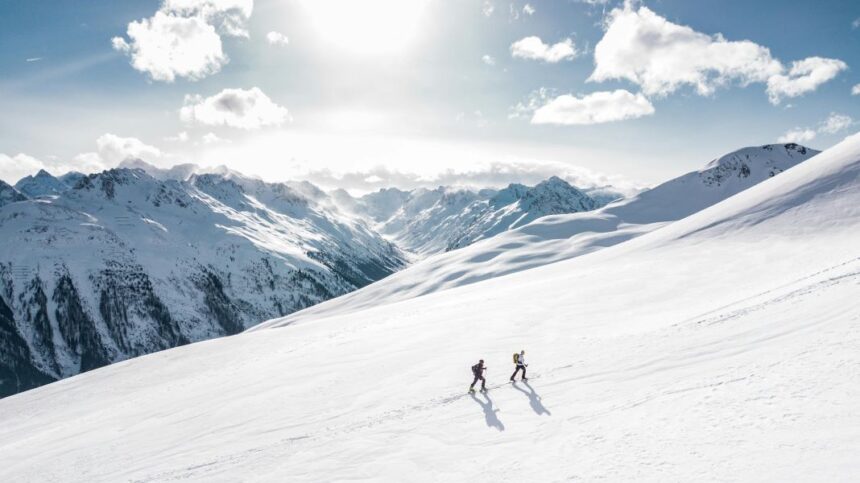If you’re planning a fall trip to the Centennial State or considering moving there, you might wonder: Does it snow in Colorado in October? The short answer is yes—it often does, depending on where you are. Colorado’s geography is incredibly diverse, with everything from low-elevation plains to high mountain peaks, which creates a wide range of weather conditions. While some areas may still enjoy crisp autumn sunshine, others can experience the season’s first significant snowfall.
October in Colorado is considered a transitional month. Snow is not unusual, especially in higher elevations such as the Rocky Mountains, ski towns, and mountainous passes. Meanwhile, lower-elevation cities like Denver or Colorado Springs might see their first flurries or light snow accumulations later in the month, although not every year. Knowing what to expect can help you better prepare—whether you’re packing for a hike, driving through the mountains, or just curious about Colorado’s weather patterns.
In this article, we’ll explore where and when it typically snows in Colorado in October, analyze historical weather data, compare snowfall by region, and offer travel and packing tips for October visits. If you’ve ever asked, “Does it snow in Colorado in October?”—this is your ultimate guide.
Does it snow in Colorado in October?
Yes, it does snow in Colorado in October, especially in higher elevations like the Rockies and ski resorts. Lower areas like Denver may see light snow late in the month.
Early Snowfall in the Rockies: What to Expect in October
October signals the arrival of early winter weather across much of Colorado’s mountainous terrain. In high-elevation towns like Aspen, Vail, and Breckenridge, snowfall in October is not just possible—it’s pretty standard. Depending on seasonal weather patterns, these ski destinations typically see their first light to moderate snow accumulations by mid or late October. The higher the elevation, the greater the likelihood of early snow, with areas above 8,000 feet often receiving measurable snowfall well before Halloween.
In contrast, the state’s eastern plains and southern regions usually enjoy milder fall conditions during this time. However, the mountain regions begin transitioning swiftly from autumn to winter. Most ski resorts initiate snowmaking operations in October, aiming for early-season openings if overnight temperatures remain cold enough. Meanwhile, mountain roads like Rabbit Ears Pass and Loveland Pass can become slick or icy, requiring caution and close attention to forecasts.
Despite the snow, many mountain towns consider October a shoulder season. Visitors can experience a rare blend of golden fall foliage alongside snow-dusted peaks. This fusion of seasons offers breathtaking scenery and a quieter, less crowded experience before the peak winter tourism begins, making October a uniquely special time to witness Colorado’s natural beauty.
Where Does It Snow in Colorado in October?
Does it snow in Colorado in October? The answer largely depends on where you are. Elevation plays a significant role in who sees the first snowflakes.
Snow in the High Country
In Colorado’s high country, snowfall in October is not only expected—it often marks the early transition to winter. Towns like Telluride, Steamboat Springs, and Vail usually receive their first flakes early in the month due to their elevation. Sitting well above 8,000 feet, these areas are among the most likely to see measurable snow accumulations before Halloween. The crisp mountain air and early-season storms frequently bring snow that sticks, especially on shaded slopes and higher peaks.
Snowfall in Denver and the Front Range
Denver on the Front Range occasionally experiences light snowfall in October. However, snow in Denver tends to arrive later in the month and is highly variable from year to year. Some Octobers pass without a flake, while others may deliver a quick dusting or even a surprise storm. The same goes for surrounding areas like Aurora and Fort Collins.
Colorado Springs and Pueblo Weather
Further south, cities like Colorado Springs and Pueblo are at lower elevations and are less prone to early snowfall. These areas may see brief flurries during a passing front, but significant accumulation before November is rare. In October, most residents experience fall foliage and cool, dry air rather than true winter conditions.
Foothill Regions and Early Ski Season
Foothill towns like Boulder and Golden can be unpredictable, sometimes seeing early-season snow thanks to cold fronts. Meanwhile, ski resorts begin snowmaking in early to mid-October, and resorts such as Arapahoe Basin and Keystone may open by the end of the month if weather permits.
Snowfall Facts About Colorado in October
If you’re asking, does it snow in Colorado in October? The answer is yes—but snowfall depends heavily on elevation, location, and weather patterns. Here are some key facts to help you understand what to expect:
- First Snow in Denver—The Mile High City usually sees its first measurable snowfall between mid- and late October. However, this timing can vary widely from year to year.
- Aspen and Breckenridge Snow Totals—Due to their high elevation, these popular ski towns often receive between 4 and 12 inches of snow during October. Some years, storms roll in early, bringing even higher totals.
- Drastic Temperature Swings – One of Colorado’s most defining October traits is its unpredictable temperature changes. It’s common to go from sunny 60°F afternoons to sudden snowstorms overnight.
- Snowmaking Operations Begin—Major ski resorts start snowmaking in early to mid-October to build a base layer for early-season skiing. If weather permits, some resorts may open by the end of the month.
- Mountain Travel Considerations—Mountain roads, including high-elevation passes, can quickly become icy or snow-covered. Drivers may be required to use snow tires or chains during sudden storms.
- No Snow Guarantee in Lower Elevations – While snow is common in mountainous regions, cities like Fort Collins and Colorado Springs don’t always receive snow in October, making it a month of mixed conditions statewide.
Why It Snows Early in Colorado: Climate and Geography
Colorado’s unique geography plays a significant role in its early snowfall patterns. The state’s varied terrain—ranging from low plains to towering peaks—creates localized microclimates. One region may enjoy sunny, mild weather while nearby mountain towns experience snow. Elevation is a key factor, as temperatures drop by approximately 3.5°F for every 1,000 feet gained. This explains why places like Breckenridge and Aspen often see snow weeks before Denver.
The weather begins transitioning in October as cold fronts sweep in from the north and west. When combined with Pacific and Gulf moisture, these systems bring sharp temperature drops and can trigger early-season snowstorms, especially above 7,000 or 8,000 feet. Ski resorts take advantage of this shift to begin snowmaking operations and grooming trails.
Because fall and winter can blur together quickly, one week may feature vibrant autumn colors, and the next, snow-covered landscapes—making October both beautiful and unpredictable.
What to Pack and Know If You Visit Colorado in October
If you’re planning a trip and wondering does it snow in Colorado in October, preparation is key. October weather is unpredictable, balancing crisp autumn days with sudden cold snaps and snow. Here’s what you need to pack and know before you go:
1. Check Weather Forecasts Regularly: October conditions can shift dramatically in a few hours. A sunny morning might turn into a snow-dusted afternoon. Monitor local weather updates daily, especially when heading into the mountains.
2. Dress in Layers: Colorado’s fall weather is all about layering. Start with a moisture-wicking base, add an insulating layer like fleece or wool, and finish with a waterproof, wind-resistant outer shell. This allows flexibility as temperatures change throughout the day.
3. Be Ready for Mountain Travel: If you drive through mountain areas, expect early snow and icy roads. Make sure your vehicle has snow-rated tires or bring chains. Even brief flurries can make high passes hazardous.
4. Pack Cold-Weather Essentials: Even urban areas like Denver or Boulder can get chilly in October. Bring gloves, a warm hat, thermal socks, and a heavy jacket. Even if the days are mild, nighttime temperatures can drop well below freezing.
5. Prepare for a Blend of Seasons: October in Colorado is a mix of fall and early winter. You’ll enjoy golden foliage alongside fresh snow. It’s perfect for scenic drives, photography, hiking, and even early ski resort visits if conditions allow.
In Closing
If you’ve been asking, “Does it snow in Colorado in October?”—the answer is yes, especially in the mountains. While not every area sees snow, higher elevations often experience the first measurable snowfall this month. Cities like Denver may see occasional flurries late in the month, but snow is far more likely in towns like Vail, Aspen, and Breckenridge.
October in Colorado is a month of transition. It blends golden fall foliage with the excitement of the coming ski season. Whether traveling, relocating, or simply curious, knowing what to expect will help you enjoy all Colorado has to offer during this beautiful yet unpredictable month.
FAQ’s
Does it snow in Denver in October?
Yes, sometimes. Denver typically sees its first measurable snow in late October, but snowfall isn’t guaranteed yearly and varies based on weather patterns.
Which parts of Colorado get snow first?
High-elevation towns such as Aspen, Breckenridge, and Telluride usually experience the season’s first snowfalls, often by mid to late October.
Is it safe to drive in the mountains in October?
Yes, generally, but always check forecasts. Mountain passes can become slick or icy quickly, so bring chains or ensure your tires are rated for snow.
Are ski resorts open in October?
Some early-season resorts, like Arapahoe Basin or Keystone, may open in late October if snowmaking and natural conditions allow, though not all do.What should I wear in Colorado in October?
Layered clothing is essential. Be sure to pack gloves, a warm hat, and a winter jacket, as temperatures can shift from mild during the day to freezing at night.











